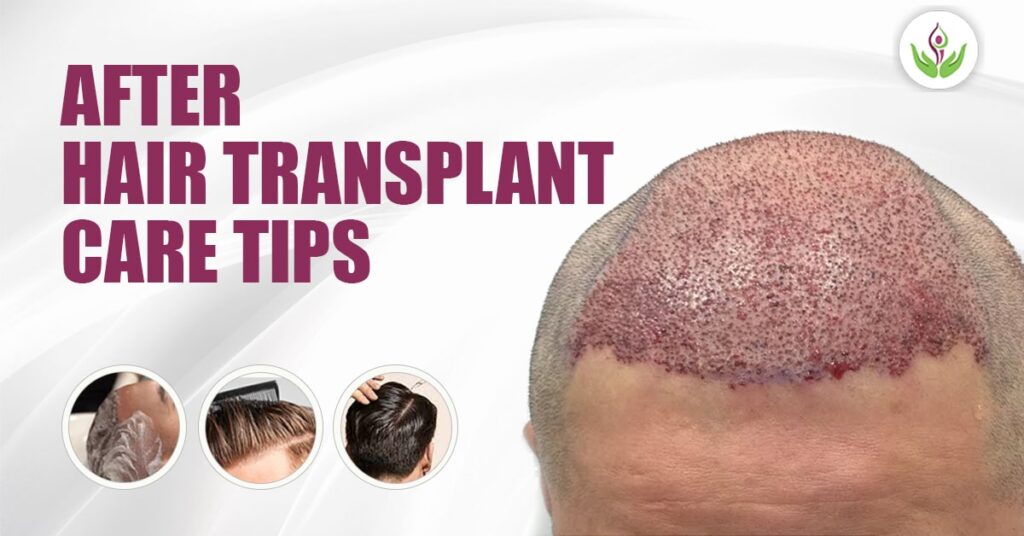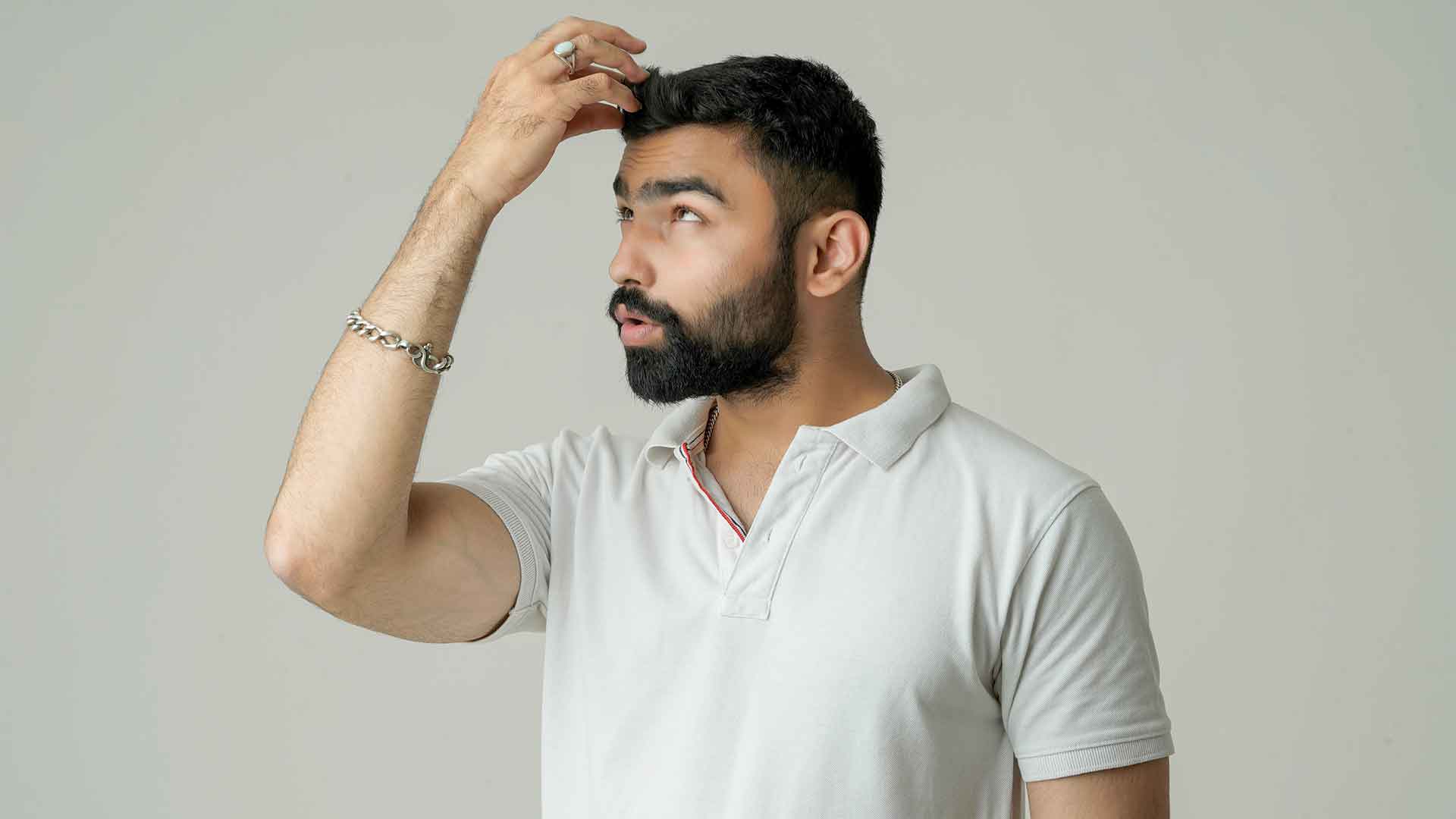
Hair transplants are an excellent solution for individuals who suffer from hair loss or thinning. Whether you are undergoing a Follicular Unit Transplantation (FUT) or a Follicular Unit Extraction (FUE), after the procedure, it is essential to follow proper hair care guidelines to ensure optimal results.
In this article, we will guide you on how to care for your hair following a hair transplant. By following these tips, you can support the growth of your new hair and keep your scalp healthy.
What is a Hair Transplant?
Before we dive into how to care for your hair after the procedure, it’s helpful to understand what a hair transplant is. A hair transplant is a surgical procedure where healthy hair follicles from one area of your scalp (typically the back or sides) are moved to a thinning or bald area. This procedure has helped many people regain confidence in their appearance.
Types of Hair Transplant Procedures
FUT (Follicular Unit Transplantation): In FUT, a strip of skin containing hair follicles is removed from a donor area and transplanted to the thinning areas.
FUE (Follicular Unit Extraction): FUE involves extracting individual hair follicles and transplanting them one by one to the desired area.
Why Hair Care Post-Transplant is Important
Taking care of your hair after a transplant is very important to help it grow strong and healthy. After the surgery, your scalp needs time to heal, and using the right hair care products can protect it. Gentle washing, avoiding scratching, and following the doctor’s advice can prevent damage to the new hair. It’s also important to avoid things like direct sunlight or harsh chemicals. By caring for your hair properly, you can make sure that the transplanted hair grows well and looks natural. Good post-transplant care helps the hair stay thick, strong, and healthy for a long time.
Here are some of the key reasons why post-transplant care is important:
- Prevents Infections: Proper cleaning helps avoid infections that could damage transplanted follicles.
- Promotes Healing: After the procedure, the scalp needs time to heal, and following the correct steps can accelerate this process.
- Supports Hair Growth: With the right hair care routine, you can encourage optimal hair growth.
Immediate Post- Hair Transplant Care
After a hair transplant, it’s important to take care of your scalp right away. For the first few days, you should avoid touching or scratching your scalp to help it heal.
1. Avoid Touching the Scalp
After the hair transplant, your scalp will have tiny scabs or crusts where the hair follicles were transplanted. It is essential not to touch, rub, or scratch your scalp to avoid dislodging the grafts.
2. Sleep with Your Head Elevated
To reduce swelling, sleep with your head elevated using pillows or a special cushion. This position helps prevent blood from accumulating in your scalp area.
3. Keep Your Scalp Clean
Your doctor will give you specific instructions on when and how to wash your hair. Generally, you will need to wait 48 hours before washing your hair. During this period, avoid getting the area wet. When you do wash your hair, be very gentle and use a mild, non-abrasive shampoo.
4. Use Medication as Directed
Your doctor may prescribe antibiotics or anti-inflammatory medications to reduce swelling and prevent infection. Be sure to follow the medication schedule as prescribed.
The First Week: Healing and Protecting Hair Transplant
he first week after a hair transplant is important for healing and protecting your new hair. During this time, your scalp may feel tender or itchy, but it’s important not to scratch it. You should gently wash your hair with special shampoo, as your doctor advises, to keep it clean. Avoid touching or rubbing your scalp, and try not to sweat too much. It’s also a good idea to sleep with your head raised to reduce swelling. Following your doctor’s care instructions carefully will help the transplanted hair stay safe and start growing properly during this first week.
1. Gentle Hair Washing
Around three days after your procedure, your doctor will allow you to gently wash your hair. Use a very mild shampoo and make sure to gently pat your scalp with your fingers—avoid scrubbing the transplanted areas. Always rinse with lukewarm water.
2. Avoid Direct Sun Exposure
Avoid exposing your scalp to direct sunlight, as this can cause irritation and damage to the newly transplanted follicles. If you must go outside, wear a loose hat to protect your scalp.
3. Minimize Physical Activity
Strenuous activities like heavy lifting, exercise, or anything that leads to sweating should be avoided for at least one week. Excessive sweating can harm your healing scalp and affect the transplant’s success.
The Second to Fourth Week: Hair Growth and Shedding Hair Transplant
During the second to fourth week after a hair transplant, you may notice some hair shedding. This is normal and happens because the new hair goes through a process called “shedding.” Don’t worry, this doesn’t mean the transplant failed. The hair is making space for new growth. Your scalp might still feel a little itchy or dry, but it’s important to keep following the care instructions from your doctor. Be gentle when washing your hair and avoid scratching your scalp. By the end of this time, you’ll be ready for the next stage as the hair starts growing again.
1. Be Gentle When Combing or Brushing
While it’s important to keep your hair clean, be gentle when combing or brushing. Use a soft brush and avoid pulling on your hair. This will minimize the chances of dislodging grafts and help with hair regrowth.
2. Don’t Scratch or Pick at Scabs
You might notice scabs or crusts forming on your scalp. Do not pick at or scratch them, as this can dislodge the grafts and increase the risk of infection.
3. Hydration and Diet
Drinking plenty of water and eating a healthy diet rich in vitamins, particularly vitamins A, C, and E, can support the healing process and promote hair growth.
The First Three Months: New Hair Growth Hair Transplant
In the first three months after a hair transplant, new hair will start to grow, but it might be slow at first. The transplanted hair follicles are waking up and beginning to grow new hair. You might notice small, thin hairs popping up, which is a good sign! Sometimes, the new hair may feel a little soft or weak, but don’t worry, it will become thicker as time goes on. It’s important to keep following the care instructions from your doctor, like gentle washing and protecting your scalp. By the end of three months, you’ll start seeing some exciting progress with your new hair.
1. Use Hair Growth Products (if Recommended)
Your doctor may suggest specific hair growth products that can help improve results. Minoxidil (Rogaine) is one of the most common treatments used to encourage hair growth. Always consult with your doctor before using any products to ensure they are suitable for you.
2. Continue to Avoid Sun Exposure
Although some new hair is growing, your scalp will still be sensitive, so continue to protect it from direct sun exposure. Wearing a loose hat or using sunscreen can be helpful.
3. Avoid Tight Hairstyles
During this period, avoid tying your hair in tight ponytails or braids, as this can cause unnecessary strain on the follicles and potentially lead to damage.
Six to Twelve Months: Full Hair Growth In Hair Transplant
From six to twelve months after a hair transplant, you will start to see your hair grow fuller and thicker. The new hair has had time to settle in and grow strong. It may still take a little more time for some areas to fill in completely, but by the end of the year, most people see great results. Your hair will look more natural and fuller, and you’ll feel more confident with the new growth. It’s important to keep taking care of your scalp by following your doctor’s advice, so your hair continues to grow healthy and strong.
1. Styling and Cutting
Once your hair has grown out, you can begin styling and cutting it as you like. However, always remember that the hair in the transplanted area is still adjusting, so it is best to avoid heavy styling products that could harm your hair.
2. Be Patient
Hair growth takes time, so be patient. It’s not uncommon for your hair to continue to thicken and grow for up to a year after the transplant. Give it time to settle into its new position and continue growing.
ullamcorper mattis, pulvinar dapibus leo.
Long-Term Hair Care In Hair Transplant
Long-term hair care after a hair transplant is important to keep your hair healthy and strong. Even after your hair has fully grown, you should continue to take care of your scalp. This means using gentle shampoo, avoiding harsh chemicals, and protecting your hair from too much sun. Eating healthy foods and staying hydrated can also help your hair stay strong. Regularly checking with your doctor or hair specialist will help make sure your hair is still growing well. By following these simple steps, your hair will stay looking great for a long time, helping you feel confident and happy.
1. Maintain a Healthy Diet
A balanced diet rich in vitamins, minerals, and proteins is crucial to keep your hair healthy. Foods like spinach, fish, eggs, and nuts are good for hair health.
2. Use Gentle Hair Products
Use mild shampoos, conditioners, and styling products that won’t irritate your scalp. Avoid products with harsh chemicals that can strip away natural oils and damage hair.
3. Regular Scalp Care
Continue to massage your scalp regularly to promote blood flow to your hair follicles. You can use natural oils like coconut or argan oil to keep your scalp moisturized.
ullamcorper mattis, pulvinar dapibus leo.
Common Mistakes to Avoid After a Hair Transplant
After a hair transplant, it’s important to avoid certain mistakes to help your hair grow well. One big mistake is scratching or rubbing your scalp, which can damage the new hair. Another mistake is washing your hair too roughly or too soon after the surgery. You should also avoid direct sunlight or hot showers, as they can irritate your scalp. Don’t skip any of the care instructions your doctor gives you, and try not to stress or worry too much. By avoiding these mistakes, you’ll help your hair heal and grow stronger, giving you the best results.
1. Not Following Doctor’s Instructions
Always follow your doctor’s instructions closely. Skipping medications or not following post-procedure care guidelines can lead to complications.
2. Using Harsh Hair Care Products
Avoid harsh hair care products such as those with alcohol or strong chemicals. These products can cause scalp irritation and disrupt hair growth.
3. Excessive Sun Exposure
Excessive exposure to the sun can damage newly transplanted hair follicles. Always protect your scalp with a hat or sunscreen.
Conclusion
Caring for your hair following a hair transplant is essential to ensure the success of the procedure and to promote healthy hair growth. By following the steps outlined in this article—such as gentle washing, avoiding direct sunlight, and eating a balanced diet—you can maximize the benefits of your hair transplant.
Remember that hair growth takes time, and it’s important to be patient and consistent with your post-transplant care. With proper attention, your hair can continue to grow stronger and healthier for years to come.

